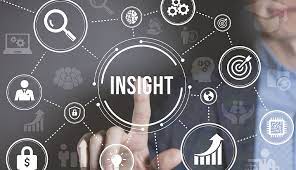Introduction
Data visualization is the art and science of turning complex numerical data into visual insights. This article explores the basics of data visualization, choosing the right visualization for different data types, tools and technologies, best practices, storytelling with data, challenges, the role in decision-making, industry applications, future trends, benefits, case studies, and frequently asked questions.
The Basics of Data Visualization
Data visualization is vital for interpreting numerical data efficiently. Visual representation, through charts, graphs, and other formats, facilitates a quicker and more comprehensive understanding of complex information.
Choosing the Right Visualization for the Data
Selecting the appropriate visualization format is crucial. Matching data types to visualization types and considering the audience and context ensure that visualizations effectively convey the intended message.
Tools and Technologies for Data Visualization
Various tools, such as Tableau, Power BI, and D3.js, enable users to create impactful visualizations. User-friendly interfaces play a key role in making data visualization accessible to a broader audience.
Best Practices in Data Visualization
Simplifying complex data, using color and annotations effectively, and avoiding misleading visualizations are essential best practices. Clarity and accuracy should be prioritized for meaningful insights.
Storytelling with Data
Data visualization becomes more powerful when it tells a story. Incorporating narrative elements engages the audience and helps convey the significance of the data being presented.
Interactive Data Visualization
Interactive visualizations enhance user engagement by allowing users to explore data dynamically. Examples of applications like interactive dashboards demonstrate the benefits of this approach.
Challenges and Considerations
Dealing with large datasets, ensuring scalability, and addressing potential biases are challenges in data visualization. These considerations are crucial for maintaining accuracy and reliability.
The Role of Data Visualization in Decision-Making
Data visualization empowers decision-makers by providing clear and actionable insights. The visual representation of data accelerates the decision-making process, facilitating more informed choices.
Data Visualization in Different Industries
Data visualization finds applications across various industries, including business, healthcare, finance, and more. Industry-specific examples highlight the versatility and effectiveness of visualizing data.
Future Trends in Data Visualization
Emerging technologies, including artificial intelligence and machine learning, are shaping the future of data visualization. Integrating these technologies will likely bring about more sophisticated and dynamic visualizations.
Benefits of Effective Data Visualization
Effective data visualization enhances communication, improves understanding and retention of information, and facilitates data-driven decision-making. These benefits contribute to more efficient and informed processes.
Case Studies
Examining case studies where data visualization made a significant impact provides practical insights. These real-world examples showcase how effective visualization can drive positive outcomes in various scenarios.
Conclusion
In conclusion, data visualization is a powerful tool for turning numbers into meaningful insights. Adopting effective data visualization practices is crucial for clear communication, improved decision-making, and enhanced understanding of complex information. Embracing the art and science of data visualization will undoubtedly contribute to more informed and impactful decision-making across diverse industries.

